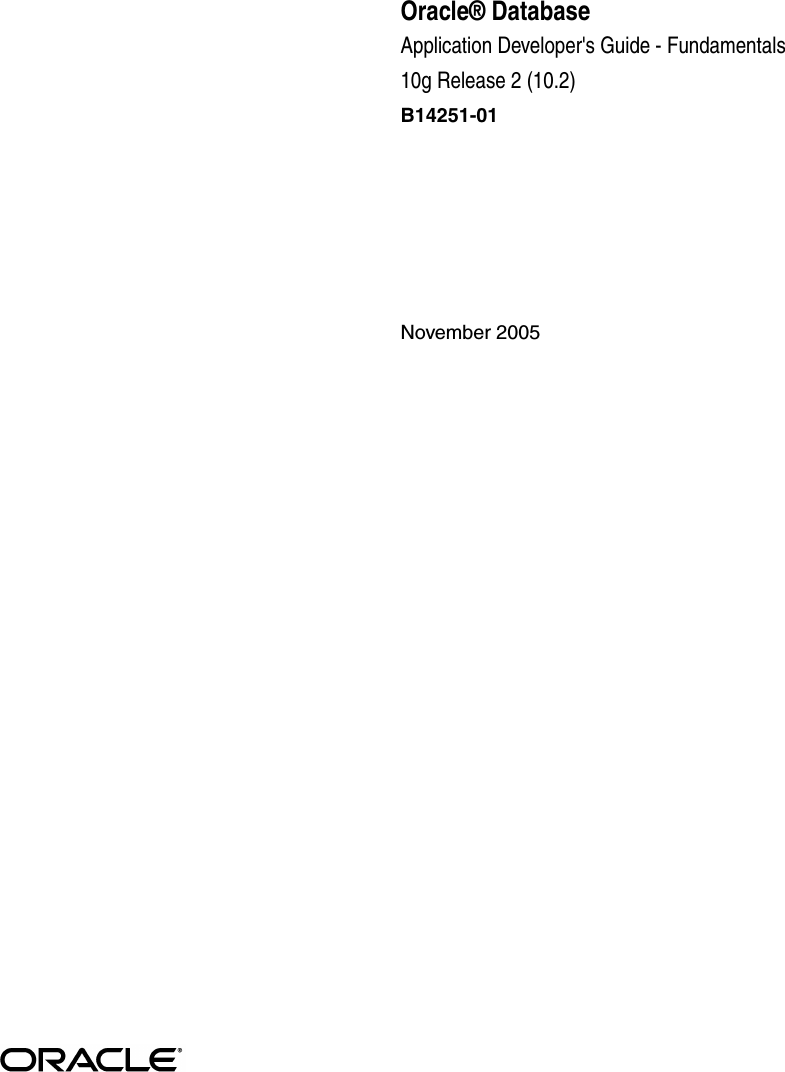The GROUP BY clause groups the selected rows based on identical values in a column or expression. This clause is typically used with aggregate functions to generate a single result row for each set of unique values in a set of columns or expressions. Table functions are functions that produce a set of rows, made up of either base data types or composite data types . They are used like a table, view, or subquery in the FROM clause of a query.
Columns returned by table functions can be included in SELECT, JOIN, or WHERE clauses in the same manner as columns of a table, view, or subquery. In this example, the columns product_id, p.name, and p.price must be in the GROUP BY clause since they are referenced in the query select list . The column s.units does not have to be in the GROUP BY list since it is only used in an aggregate expression (sum(...)), which represents the sales of a product. For each product, the query returns a summary row about all sales of the product.
The GROUP BY clause groups together rows in a table with non-distinct values for the expression in the GROUP BY clause. For multiple rows in the source table with non-distinct values for expression, theGROUP BY clause produces a single combined row. GROUP BY is commonly used when aggregate functions are present in the SELECT list, or to eliminate redundancy in the output.
ROLLUP is an extension of the GROUP BY clause that creates a group for each of the column expressions. Additionally, it "rolls up" those results in subtotals followed by a grand total. Under the hood, the ROLLUP function moves from right to left decreasing the number of column expressions that it creates groups and aggregations on. Since the column order affects the ROLLUP output, it can also affect the number of rows returned in the result set. Note that the ORDER BY specification makes no distinction between aggregate and non-aggregate rows of the result set. For instance, you might wish to list sales figures in declining order, but still have the subtotals at the end of each group.
Simply ordering sales figures in descending sequence will not be sufficient, since that will place the subtotals at the start of each group. Therefore, it is essential that the columns in the ORDER BY clause include columns that differentiate aggregate from non-aggregate columns. This requirement means that queries using ORDER BY along with aggregation extensions to GROUP BY will generally need to use one or more of the GROUPING functions.
The CUBE, ROLLUP, and GROUPING SETS extensions to SQL make querying and reporting easier and faster. CUBE, ROLLUP, and grouping sets produce a single result set that is equivalent to a UNION ALL of differently grouped rows. ROLLUP calculates aggregations such as SUM, COUNT, MAX, MIN, and AVG at increasing levels of aggregation, from the most detailed up to a grand total. CUBE is an extension similar to ROLLUP, enabling a single statement to calculate all possible combinations of aggregations.
The CUBE, ROLLUP, and the GROUPING SETS extension lets you specify just the groupings needed in the GROUP BY clause. This allows efficient analysis across multiple dimensions without performing a CUBE operation. Computing a CUBE creates a heavy processing load, so replacing cubes with grouping sets can significantly increase performance. The ORDER BY clause specifies a column or expression as the sort criterion for the result set.
If an ORDER BY clause is not present, the order of the results of a query is not defined. Column aliases from a FROM clause or SELECT list are allowed. If a query contains aliases in the SELECT clause, those aliases override names in the corresponding FROM clause. Once the rows are divided into groups, the aggregate functions are applied in order to return just one value per group.
It is better to identify each summary row by including the GROUP BY clause in the query resulst. All columns other than those listed in the GROUP BY clause must have an aggregate function applied to them. The GROUP BY clause is often used in SQL statements which retrieve numerical data. It is commonly used with SQL functions like COUNT, SUM, AVG, MAX and MIN and is used mainly to aggregate data.
Which Sql Query Must Have Must Have A Group By Clause When Used With The Said Functions Data aggregation allows values from multiple rows to be grouped together to form a single row. The first table shows the marks scored by two students in a number of different subjects. The second table shows the average marks of each student.
Each sublist of GROUPING SETS may specify zero or more columns or expressions and is interpreted the same way as though it were directly in the GROUP BY clause. An empty grouping set means that all rows are aggregated down to a single group , as described above for the case of aggregate functions with no GROUP BY clause. Once we execute a Select statement in SQL Server, it returns unsorted results. We can define a sequence of a column in the select statement column list.
We might need to sort out the result set based on a particular column value, condition etc. We can sort results in ascending or descending order with an ORDER BY clause in Select statement. Expression_n Expressions that are not encapsulated within the MAX function and must be included in the GROUP BY clause at the end of the SQL statement. Aggregate_expression This is the column or expression from which the maximum value will be returned. Tables The tables that you wish to retrieve records from. There must be at least one table listed in the FROM clause.
These are conditions that must be met for the records to be selected. To find the GROUP BY level of a particular row, a query must return GROUPING function information for each of the GROUP BY columns. If we do this using the GROUPING function, every GROUP BY column requires another column using the GROUPING function. For instance, a four-column GROUP BY clause needs to be analyzed with four GROUPING functions. This is inconvenient to write in SQL and increases the number of columns required in the query. When you want to store the query result sets in tables, as with materialized views, the extra columns waste storage space.
The fetch construct cannot be used in queries called using iterate() (though scroll() can be used). Fetch should also not be used together with impromptu with condition. It is possible to create a cartesian product by join fetching more than one collection in a query, so take care in this case. Join fetching multiple collection roles can produce unexpected results for bag mappings, so user discretion is advised when formulating queries in this case.
Finally, note that full join fetch and right join fetchare not meaningful. Window functions perform calculations on a set of rows that are related together. But, unlike the aggregate functions, windowing functions do not collapse the result of the rows into a single value.
Instead, all the rows maintain their original identity and the calculated result is returned for every row. The SUM() function returns the total value of all non-null values in a specified column. Since this is a mathematical process, it cannot be used on string values such as the CHAR, VARCHAR, and NVARCHAR data types. When used with a GROUP BY clause, the SUM() function will return the total for each category in the specified table. Each grouping set defines a set of columns for which an aggregate result is computed.
The final result set is the set of distinct rows from the individual grouping column specifications in the grouping sets. GROUPING SETS syntax can be defined over simple column sets or CUBEs or ROLLUPs. In effect, CUBE and ROLLUP are simply short forms for specific varieties of GROUPING SETS.
CUBE generates the GROUP BY aggregate rows, plus superaggregate rows for each unique combination of expressions in the column list. The order of the columns specified in CUBE() has no effect. A simple GROUP BY clause consists of a list of one or more columns or expressions that define the sets of rows that aggregations are to be performed on. A change in the value of any of the GROUP BY columns or expressions triggers a new set of rows to be aggregated. CUBE is typically most suitable in queries that use columns from multiple dimensions rather than columns representing different levels of a single dimension. For instance, a commonly requested cross-tabulation might need subtotals for all the combinations of month, state, and product.
These are three independent dimensions, and analysis of all possible subtotal combinations is commonplace. Subtotals such as profit by day of month summed across year would be unnecessary in most analyses. I discovered that it is possible to use the results of one query as the data range for a second query . A table reference can be a table name (possibly schema-qualified), or a derived table such as a subquery, a JOIN construct, or complex combinations of these. If more than one table reference is listed in the FROM clause, the tables are cross-joined (that is, the Cartesian product of their rows is formed; see below). FILTER is a modifier used on an aggregate function to limit the values used in an aggregation.
All the columns in the select statement that aren't aggregated should be specified in a GROUP BY clause in the query. The GROUPING function is not only useful for identifying NULLs, it also enables sorting subtotal rows and filtering results. In Example 20-8, you retrieve a subset of the subtotals created by a CUBE and none of the base-level aggregations. The HAVING clause constrains columns that use GROUPING functions. The USING clause requires a column list of one or more columns which occur in both input tables.
It performs an equality comparison on that column, and the rows meet the join condition if the equality comparison returns TRUE. SELECT AS STRUCT can be used in a scalar or array subquery to produce a single STRUCT type grouping multiple values together. Scalar and array subqueries are normally not allowed to return multiple columns, but can return a single column with STRUCT type.
In the first SELECT statement, we will not do a GROUP BY, but instead, we will simply use the ORDER BY clause to make our results more readable sorted as either ASC or DESC. IIt is important to note that using a GROUP BY clause is ineffective if there are no duplicates in the column you are grouping by. A better example would be to group by the "Title" column of that table. The SELECT clause below will return the six unique title types as well as a count of how many times each one is found in the table within the "Title" column. "Order by 2" is only valid when there are at least two columns being used in select statement. You can use a SELECT statement for the function body by enclosing it in parentheses, exactly as you would to use a subselect for any other expression.
If more than one column is returned when the function is called, error 1241 results. If more than one row is returned when the function is called, error 1242 results. The OVER clause signifies a window of rows over which a window function is applied. It can be used with aggregate functions, like we have used with the SUM function here, thereby turning it into a window function.
Or, it can also be used with non-aggregate functions that are only used as window functions . Can be used to simplify a query that needs many GROUP BY levels. The function argument is a list of one or more columns or expressions in parentheses.
The result is an integer consisting of "n" binary digits, where "n" is the number of parameters to the function. Clause causes the result rows to be sorted according to the specified expression. If two rows are equal according to the leftmost expression, they are compared according to the next expression and so on.
If they are equal according to all specified expressions, they are returned in an implementation-dependent order. The primary sort order of a table must be ascending on a time attribute. Use an explicit top-level ORDER BY clause if you want to be sure the results are sorted in a particular way.
References to the grouping columns or expressions are replaced by null values in result rows for grouping sets in which those columns do not appear. To distinguish which grouping a particular output row resulted from, see Table 9.59. In the example above, the WHERE clause is selecting rows by a column that is not grouped , while the HAVING clause restricts the output to groups with total gross sales over 5000. Note that the aggregate expressions do not necessarily need to be the same in all parts of the query. Rows that do not meet the search condition of the WHERE clause are eliminated from fdt.
Notice the use of scalar subqueries as value expressions. Just like any other query, the subqueries can employ complex table expressions. Qualifying c1 as fdt.c1 is only necessary if c1 is also the name of a column in the derived input table of the subquery.
But qualifying the column name adds clarity even when it is not needed. This example shows how the column naming scope of an outer query extends into its inner queries. Json_to_recordset() is instructed to return two columns, the first integer and the second text. The ORDER BY clause sorts the column values as integers. If the WITH ORDINALITY clause is specified, an additional column of type bigint will be added to the function result columns. This column numbers the rows of the function result set, starting from 1.
The following example selects the range variable Coordinate, which is a reference to rows in table Grid. Since Grid is not a value table, the result type of Coordinate is a STRUCT that contains all the columns from Grid. When referencing a range variable on its own without a specified column suffix, the result of a table expression is the row type of the related table. Value tables have explicit row types, so for range variables related to value tables, the result type is the value table's row type. Other tables do not have explicit row types, and for those tables, the range variable type is a dynamically defined STRUCT that includes all of the columns in the table.





























No comments:
Post a Comment
Note: Only a member of this blog may post a comment.